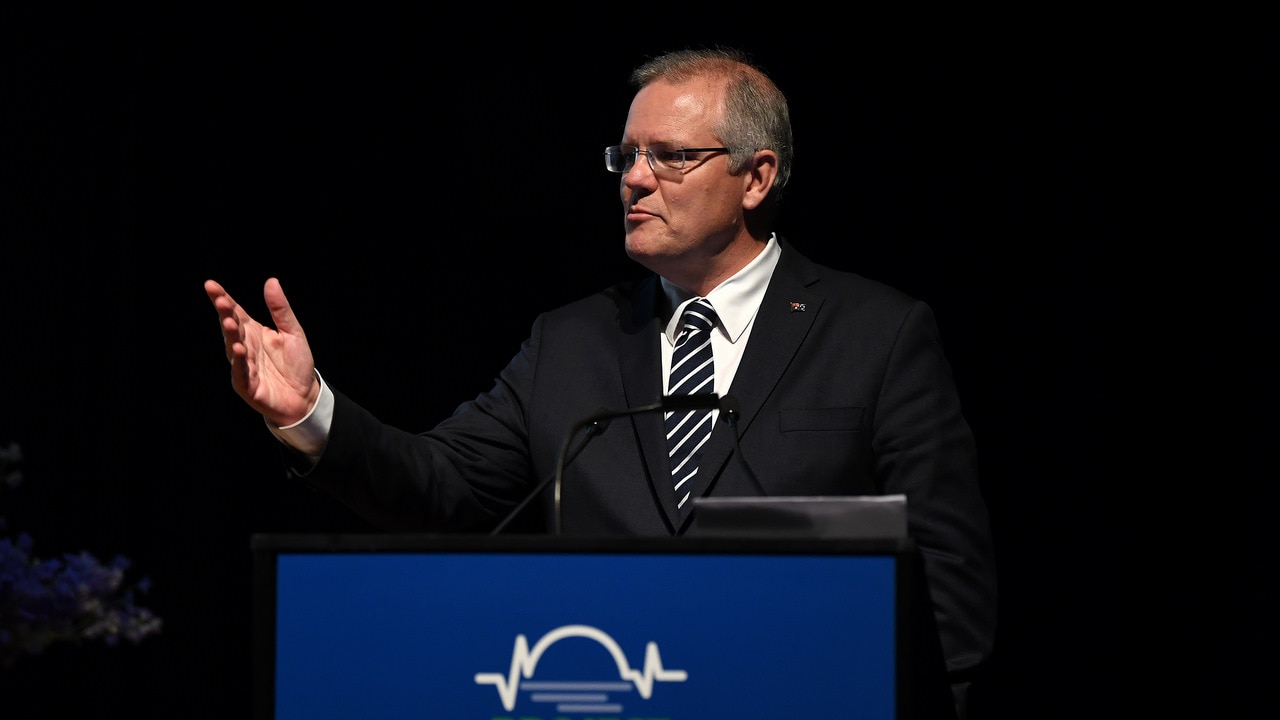Prime Minister Scott Morrison says he intends to cut Australia's migration intake by about 30,000 people, acknowledging public concern about congested cities.
"They are saying: enough, enough, enough," Mr Morrison said at a speech in Sydney on Monday night.
"The roads are clogged, the buses and trains are full. The schools are taking no more enrolments. I hear what you are saying. I hear you loud and clear."
Mr Morrison made the remarks as part of the 2018 Bradfield Oration at the Art Gallery of NSW. Prime Minister Scott Morrison speaks at the Project Sydney Bradfield Oration in Sydney.
Prime Minister Scott Morrison speaks at the Project Sydney Bradfield Oration in Sydney.

AAP
The immigration intake cap has been set at 190,000 since 2012-13, although the actual intake in recent years has been 30,000 below the cap.
Prime Minister Morrison said he expects the cap will be reduced as a result of increased policy input from the states.
“I anticipate that this will lead to a reduction in our current migration settings,” citing the 160,000 level intake of recent years.
"We will look to make an adjustment as we go forward in to next year and this should not be surprising.”
‘Old model no longer fit for purpose’
State ministers have been invited to have their say on setting the country’s cap on immigration levels at next month’s COAG meeting.
“My approach will be to move away from top-down discussions about population to set our migration intake caps,” he said.
Mr Morrison said the states were in the best position to predict the impact of population growth on infrastructure.
“I want the states to bring forward their population plans targeted to their states... This will feed into the setting of our migration caps and policies for next year, ensuring that migration is finally tied to infrastructure and services carrying capacity.”
The limit on annual migration intake levels are set before the end of each financial year, and Immigration Minister David Coleman said a review is underway to consider revising the cap to take effect from July 2019.
NSW Premier Gladys Berejiklian has called for the immigration intake to be halved as Sydney experiences congestion and infrastructure issues, which she says stems from the migrants who have favoured the Australian city over others.
Mr Morrison said he wants input from the states and territories before the federal government sets its annual cap.
“The old model of a single, national number determined by Canberra is no longer fit for purpose,” he said.
“The states and territories know better than any what the population carrying capacity is for their existing and planned infrastructure and services.”
Sydney bursting at the seams
During his speech, Mr Morrison revealed it was by a quirk of fate that he studied economic geography instead of town planning.
“For a while, I tossed up becoming a town planner. Eventually, I found myself studying economic geography at UNSW,” he told the audience.
“I was one of only about eight students – studying everything from crop rotation to Walter Christaller’s central place theory.”
He said his interest in cities never waned, and he believes the current pattern of population growth is not sustainable.
“In 2016-17, Sydney’s population increased by 107,000. In other words, Sydney grew by almost 2,000 people a week, every week. A suburb a week,” he said.
“Of that overseas migration claimed the lion’s share – with 90,100 people.”
“Many of the smaller cities – and the regions – want more people.”
Mr Morrison also praised migrants for building Australia's economy.
“Over the two decades to 2016, our national population grew by six million and migration made up 54 per cent of that increase,” he told the audience.
“It is a key reason why we have been able to sustain strong growth in our economy and national incomes that are the envy of the developed world, contributing almost a fifth of the growth in Australia’s GDP per person over the past 30 years.”
"It is worth remembering that because skilled migration supports the economy, Australia does compete with other countries in bringing those additional skills to our shores."
With a population of 25 million, Australia has the 53rd largest population in the world, one place behind North Korea and ahead of Côte d’Ivoire.
Mr Morrison said according to the World Bank, Australia's population is growing faster than most OECD countries, including the United States.
put the global population increase over 2017 at 1.1 per cent, compared to Australia’s 1.6 per cent rise.
